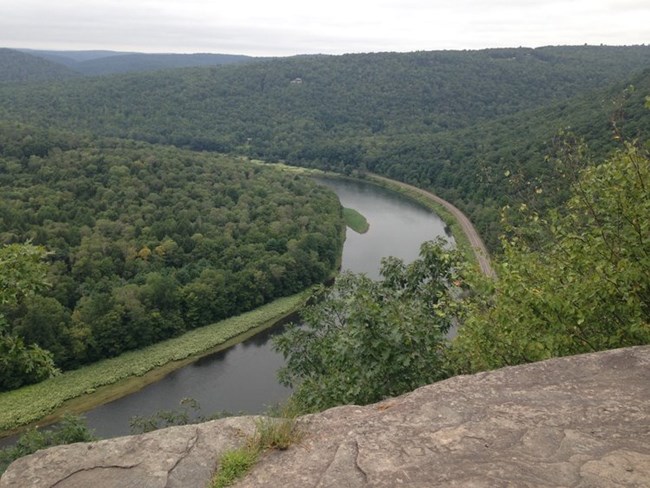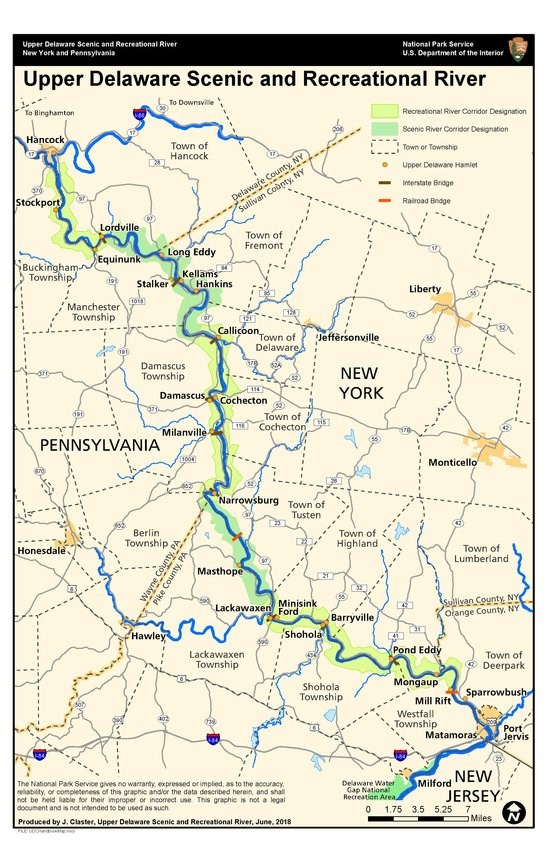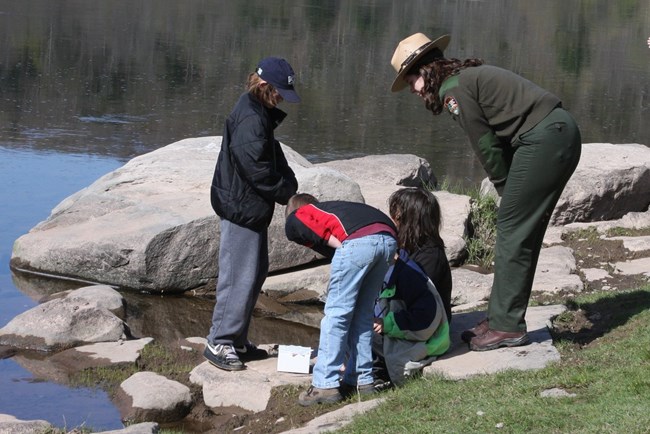
National Park Service Park PurposeThe Upper Delaware Scenic and Recreational River protects, conserves, and enhances the free-flowing character, exceptionally high water quality, and the scenic, recreational, ecological, cultural, and geological values of the Upper Delaware River valley through collaborative partnerships and cooperation with state and local government entities. Upper Delaware Scenic and Recreational River Purpose and Management Goals Management as a Wild and Scenic RiverIn 1968, Congress passed the Wild and Scenic Rivers Act. The act "declared to be the policy of the United States that certain selected rivers of the Nation, which with their immediate environments possess outstandingly remarkable scenic, recreational, geologic, fish and wildlife, historic, cultural, or other similar values, shall be preserved in free-flowing condition, and that they and their immediate environments shall be protected for the benefit and enjoyment of present and future generations." In 1978, Congress used the Wild and Scenic Rivers Act to designate the Upper Delaware River as a unit of the national park system and a component of the National Wild and Scenic Rivers System. Each designated river in the national system is to be managed in a way that protects and enhances the values that prompted its designation. 
National Park Service Under the Wild and Scenic Rivers Act, rivers included in the National Wild and Scenic Rivers System are classified, designated, and managed as wild, scenic, and/or recreational. Upper Delaware Scenic and Recreational River contains two types of river designations, which are characterized as follows: Scenic river areas -- Those rivers or sections of rivers that are free of impoundments, with shorelines or watersheds still largely primitive and shorelines largely undeveloped, but accessible in places by roads. Recreational river areas -- Those rivers or sections of rivers that are readily accessible by road or railroad, that may have some development along their shorelines, and that may have undergone some impoundments or diversions in the past. Based on the recommendations of the 1976 Wild and Scenic River Study for the Upper Delaware River, the 73.4 miles of the river within the park are broken into two scenic and three recreational segments. The designated segments of the river and the rationale for these designations are described in the 1986 Final River Management Plan for the Upper Delaware Scenic and Recreational River. The Final River Management Plan (1986) 
National Park Service Management as a Unit of the National Park Service
Within Upper Delaware Scenic and Recreational River, park managers set priorities and submit projects to accomplish the goals and actions described in the River Management Plan, guiding both the park's partnership activities and its more traditional park operations. Administration keeps the park running, cultural resources protects historic and archaeological resources, interpretive park rangers educate the public, US Park Rangers respond to visitor needs, natural resources protects the ecosystem, and maintenance cares for park facilities. |
Last updated: January 14, 2020
